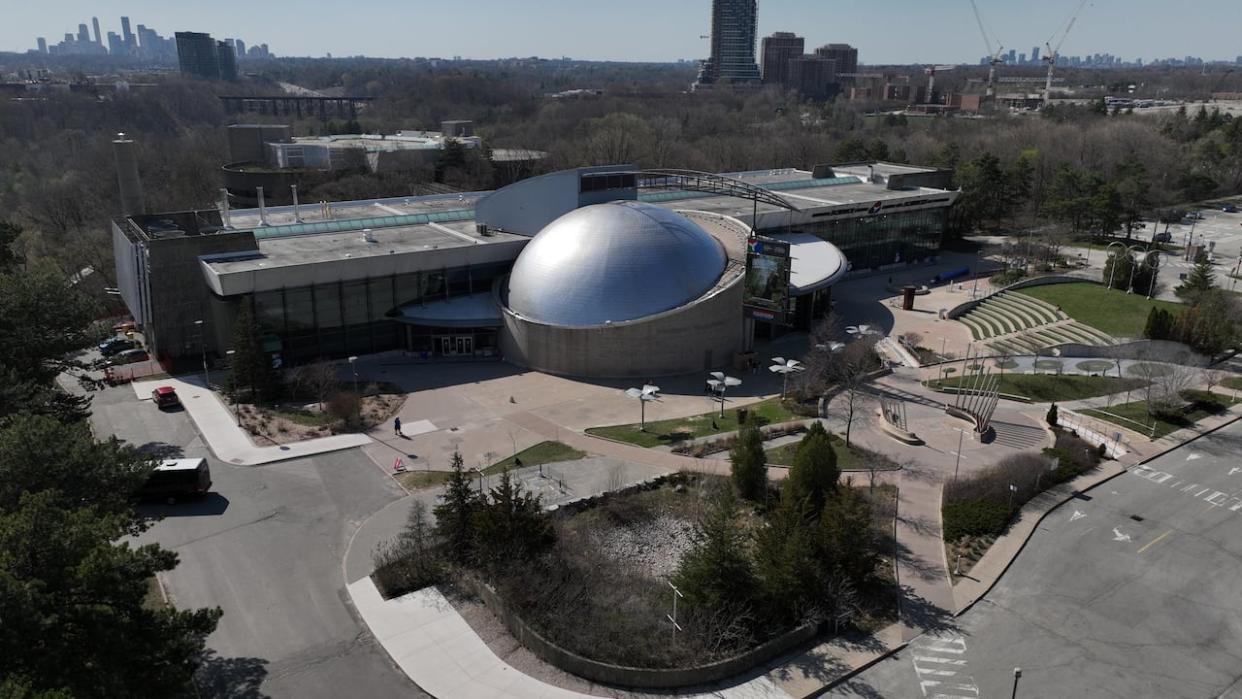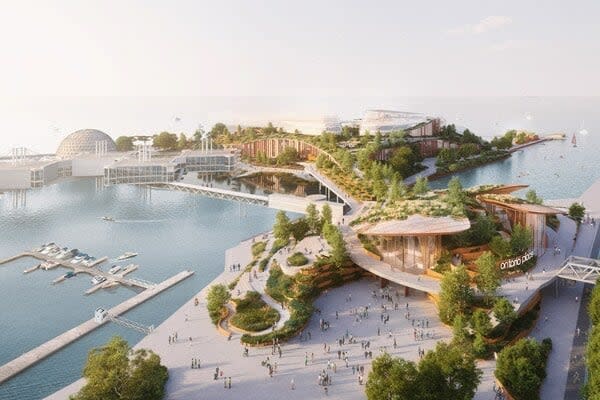Ford government says moving Ontario Science Centre would save some $250M

The provincial government is releasing a long-awaited business case for its decision to move the Ontario Science Centre to Ontario Place, saying moving the attraction to Toronto's western waterfront would save more than $250 million.
The move immediately sparked controversy when it was first announced in April, with many in the city voicing support for leaving the science centre in Thorncliffe Park, a community with few other major public services compared to Toronto's downtown core.
However, the province has maintained the aging building is becoming too costly to maintain, something Infrastructure Ontario released new details about Wednesday. An audit found keeping the science centre where it is would cost $1.3 billion, while moving it would cost some $1.05 billion.
"The [Ontario Science Centre] at Don Mills is not sustainable under status quo conditions and is in operational crisis," reads the business case.
It says the centre is housed in a failing structure with mounting building maintenance costs, and has experienced a long-term trend of declining attendance, declining revenues and stagnant operating subsidies.
"These compounding realities challenge the ongoing viability of the [Ontario Science Centre] at its current site," the business case says.
You can read the full business case at the bottom of this story.

The new location at a redeveloped Ontario Place — with a planned opening in 2028 — is set to be half the size of the current science centre, though the government says there will be more exhibition space despite a smaller overall footprint. (Therme Canada)
The cost comparison is based on the total project costs related to design, construction, exhibit modernization, operations and maintenance for a 50-year period, according to provincial documents shared with reporters Wednesday.
The business case was developed by Infrastructure Ontario alongside external advisers, including the consultancy firm Ernst & Young, which handled the fiscal and economic impact.
It says the savings estimate is considered conservative and could be greater in reality.
Opposition calls business case a 'guesstimate'
In a statement responding to the release of the business case, Liberal MPP for Don Valley East Adil Shamji said the province's justification doesn't consider the perspective of Ontarians.
He said the math only works because the science centre's footprint will be "slashed in half," although the province maintains it will have more space for exhibitions.
Ontario NDP Leader Marit Stiles similarly criticized the province's methodology.
"The government's justification relies on shaky 50-year guesstimates, wild guesstimates of revenues and expenses over 50 years," she said.
Stiles also pointed out that the calculations don't include the cost of refurbishing the pods and cinesphere at Ontario Place.
Michael Lindsay, president and CEO of Infrastructure Ontario, confirmed when speaking to reporters that the cost of that work falls under a separate budget for rehabilitating Ontario Place.
Smaller footprint but more exhibition space, province says
The new location at Ontario Place — with a planned opening in 2028 — is set to be half the size of the current science centre, though the government says there will be more exhibition space despite a smaller overall footprint. The business case says 888 construction jobs would be created by the relocation, while 356 jobs would be needed for annual operations, which is 53 fewer than the current site.
The business case also says a smaller building would result in savings of $8.2 million a year compared to having the science centre stay put.
Other science centres planned and built over the last decade, like in Miami or San Francisco, were significantly smaller than the existing Ontario Science Centre, said Dov Goldstein, vice president of Lord Cultural Resources, which also worked on the business case.
He said smaller centres are more efficient while being able to maintain large gallery spaces.

Michael Lindsay, president and CEO of Infrastructure Ontario, said when trying to guarantee the viability of any business, it's always preferred to build somewhere undeveloped rather than demolishing or rehabilitating an existing location. (Evan Mitsui/CBC)
Moving the building to Ontario Place would also facilitate a "re-imagination and re-branding" of the science centre that would modernize its operations, allowing it to compete against other contemporary attractions, according to the business case.
Lindsay said when trying to guarantee the viability of any business, it's always preferred to design a new facility on a previously undeveloped site rather than demolishing or rehabilitating an existing location.
Asked if the province could rebuild a new centre on the same site, he told reporters at Queen's Park that potential project wasn't studied.
"Technically, is it possible? Yes," he said. "We don't actually know what any of the considerations would be about Don Mills and its heritage characteristics."
In April, Infrastructure Minister Kinga Surma cited a "business case analysis" as justification for moving the centre. The government refused requests from The Canadian Press and other media outlets in April to publicly release the business case and has given itself three time extensions to fulfill a request for it under freedom-of-information legislation, with the last deadline of Sept. 20 coming and going unacknowledged.
Asked why the business case was cited in April but not released until November, Lindsay said the team wanted to ensure there were no concerns about confidential information or legal issues when releasing it.
Move to Ontario Place met with pushback
The science centre's move to Ontario Place, along with the redevelopment of the waterfront site and construction of a private spa, has been a source of debate since it was announced.
In July, Toronto Coun. Josh Matlow brought a motion to council asking the city to explore the feasibility of keeping the centre in its current location to serve the Thorncliffe Park and Flemington Park neighbourhoods. That motion passed 21-3.
In April, Ahmed Hussein, CEO for the Neighborhood Organization, said newcomers, youth and people living on lower incomes in the area benefitted from the centre's proximity. He said Toronto needs attractions in the suburbs and not only downtown.
On Tuesday, a spokesperson for Mayor Olivia Chow told CBC Toronto that the mayor's office is in discussion with the impacted communities and doesn't "want these neighbourhoods and the city to lose this community space."
Earlier this week, Premier Doug Ford and Chow announced that as part of a deal that will see the province take on the operations and costs of the Gardiner Expressway and Don Valley Parkway highways, the two levels of government will discuss keeping some sort of science programming at the existing science centre location.


